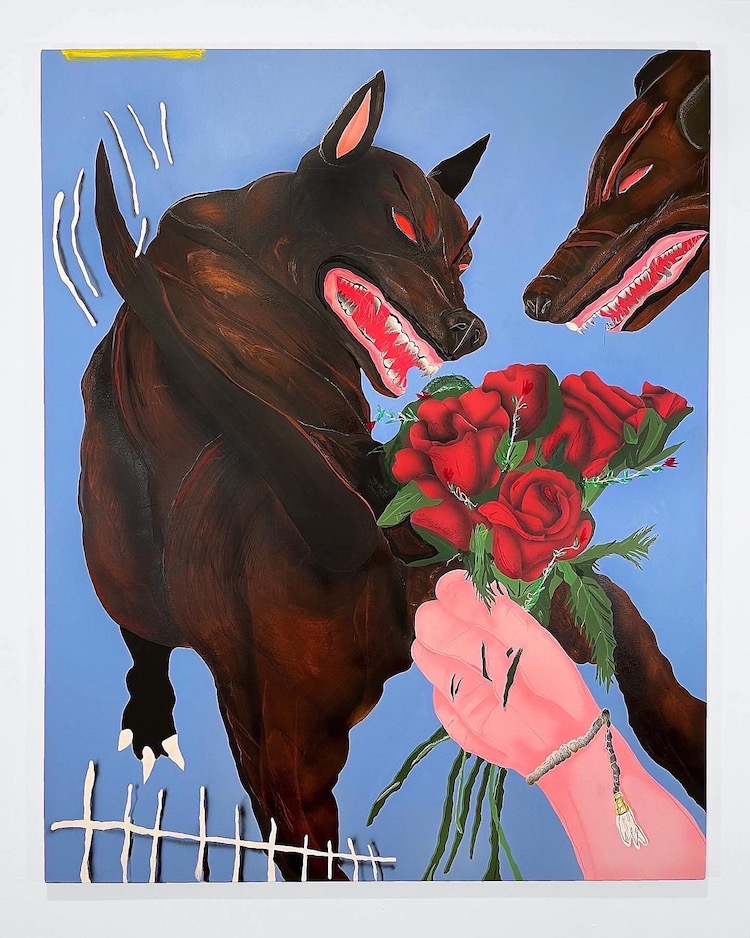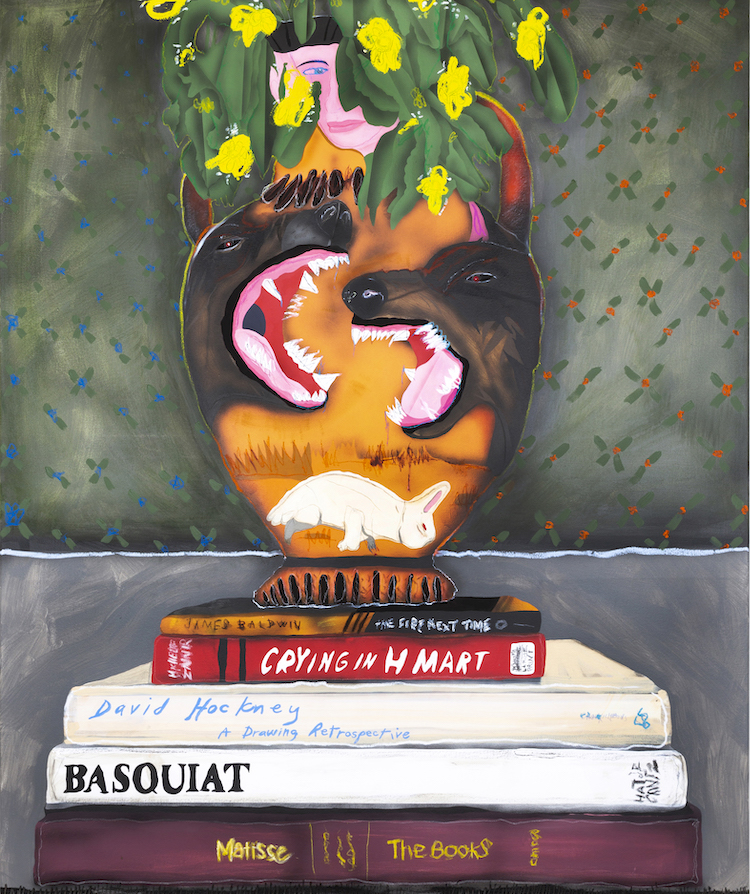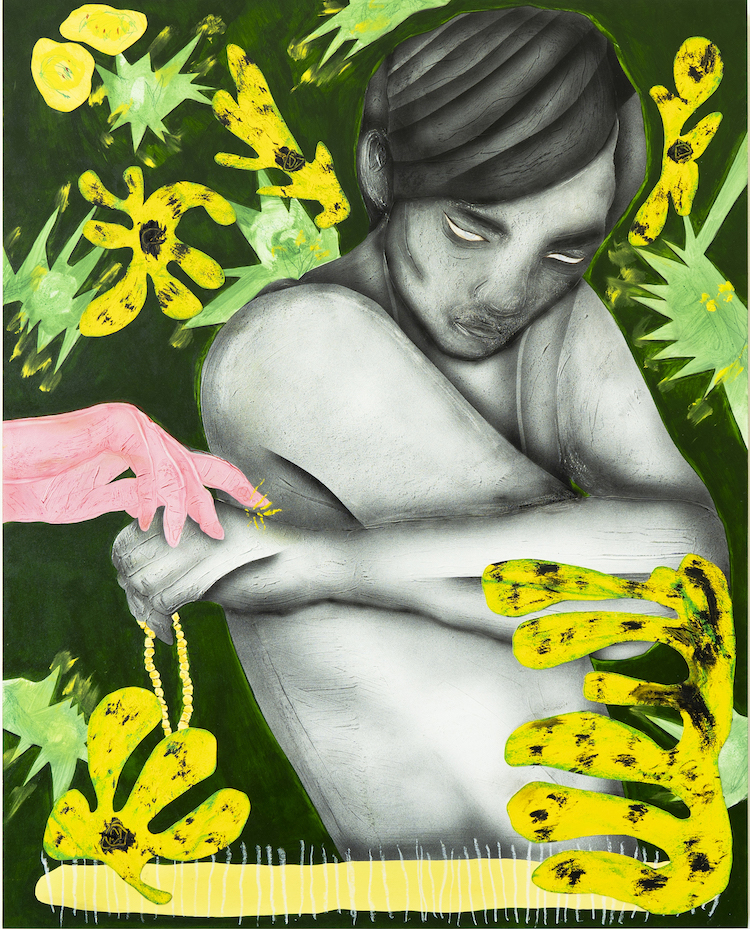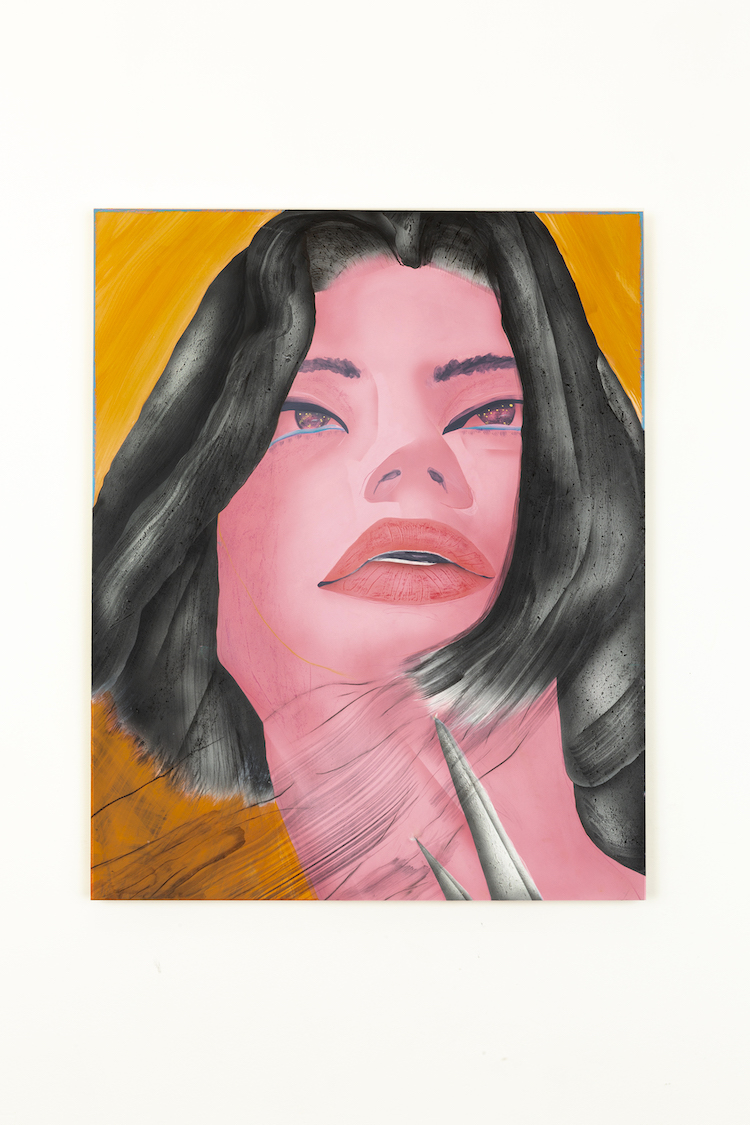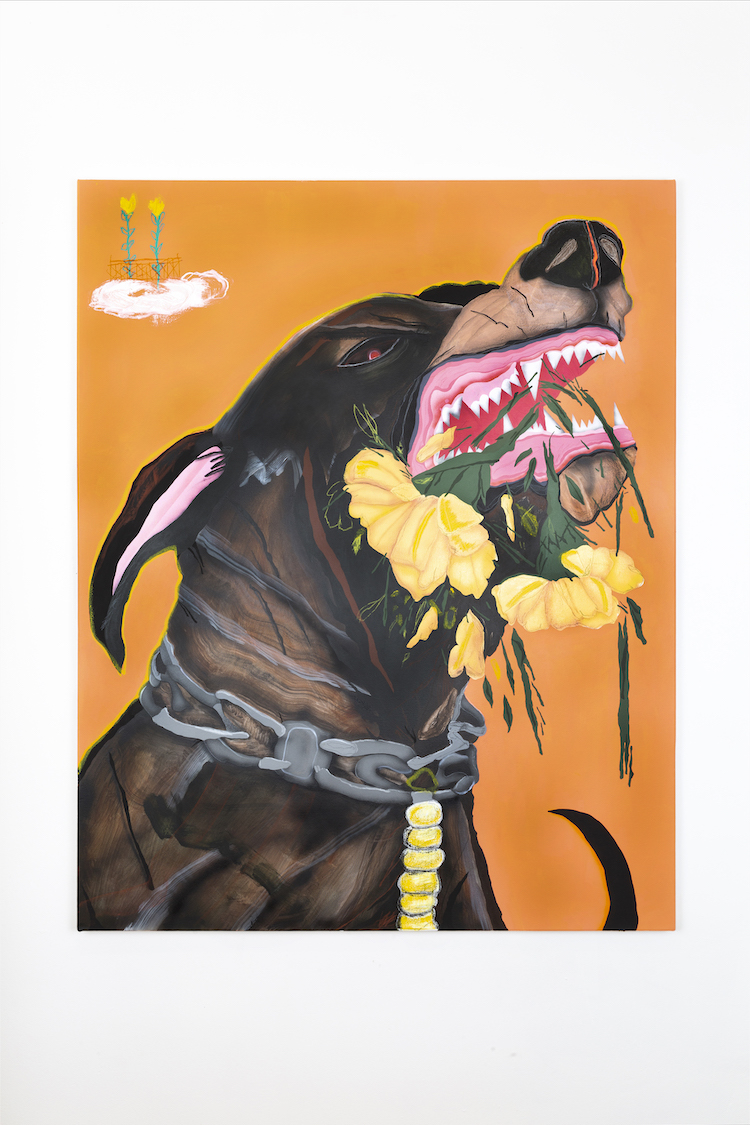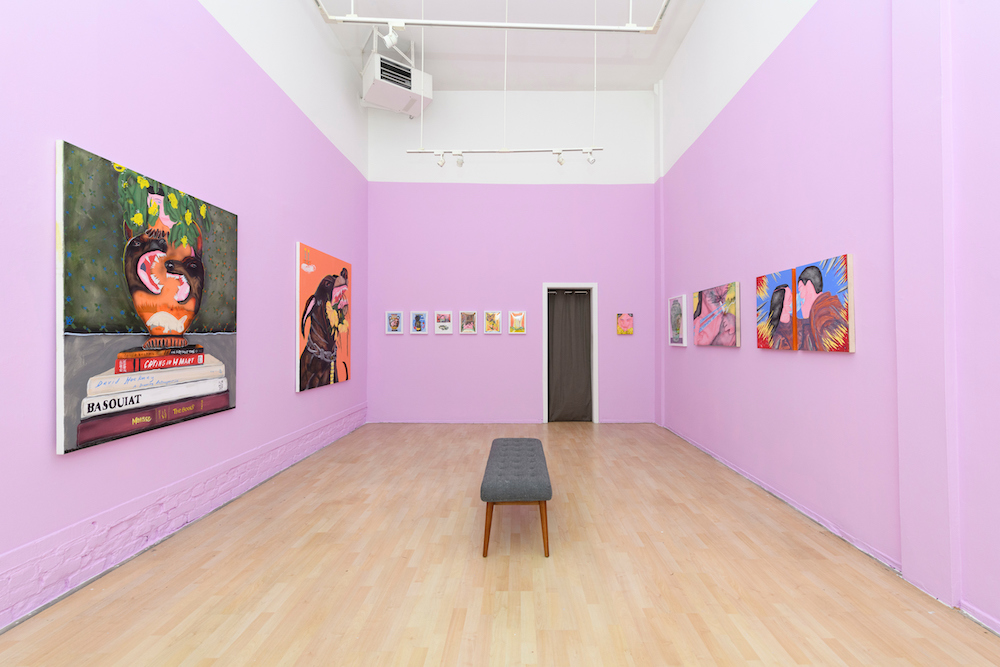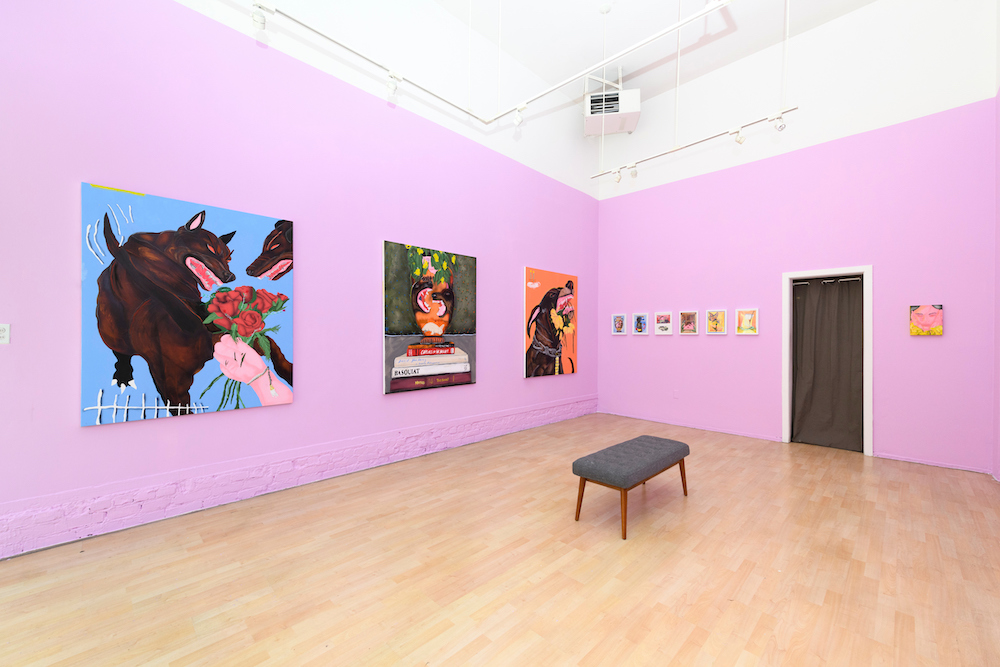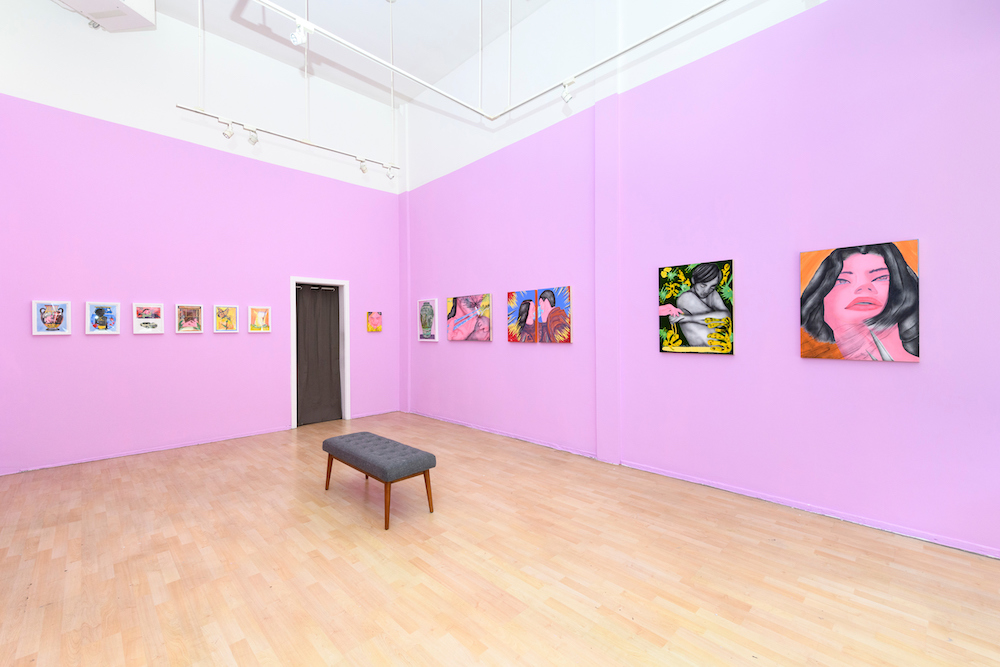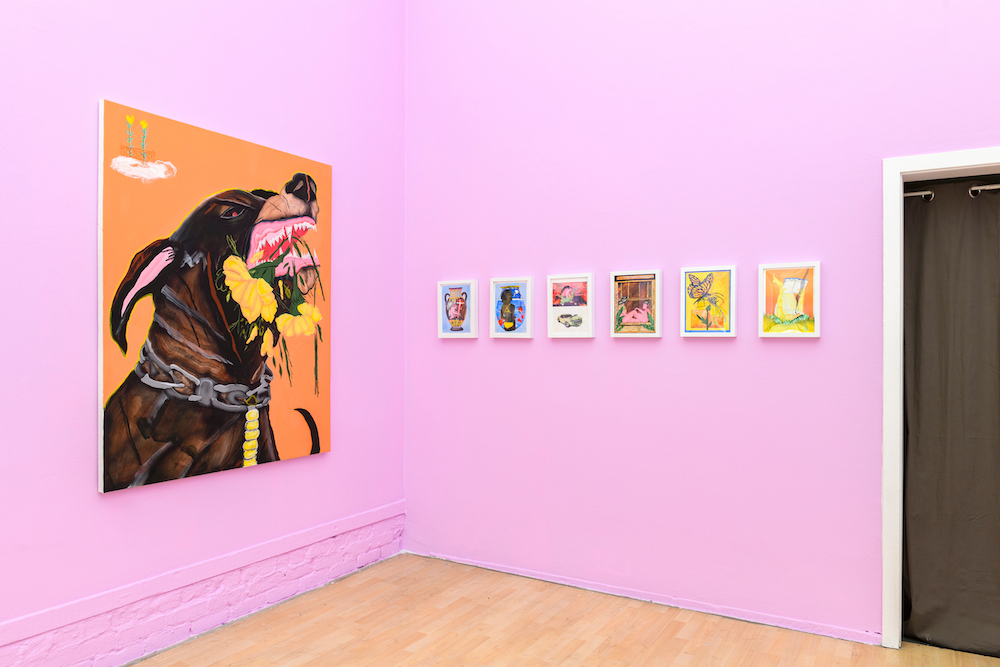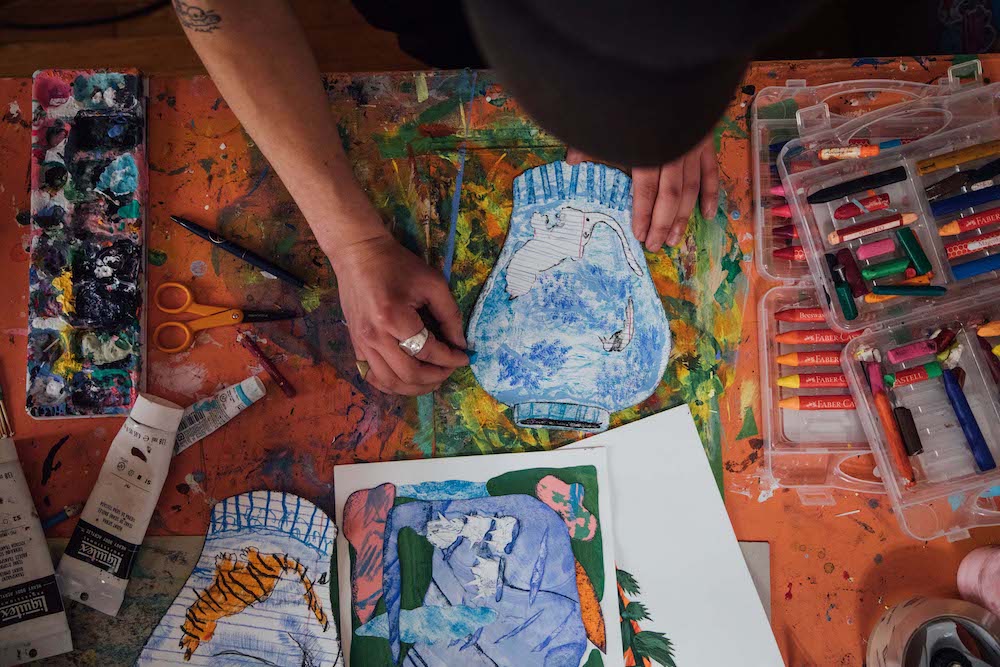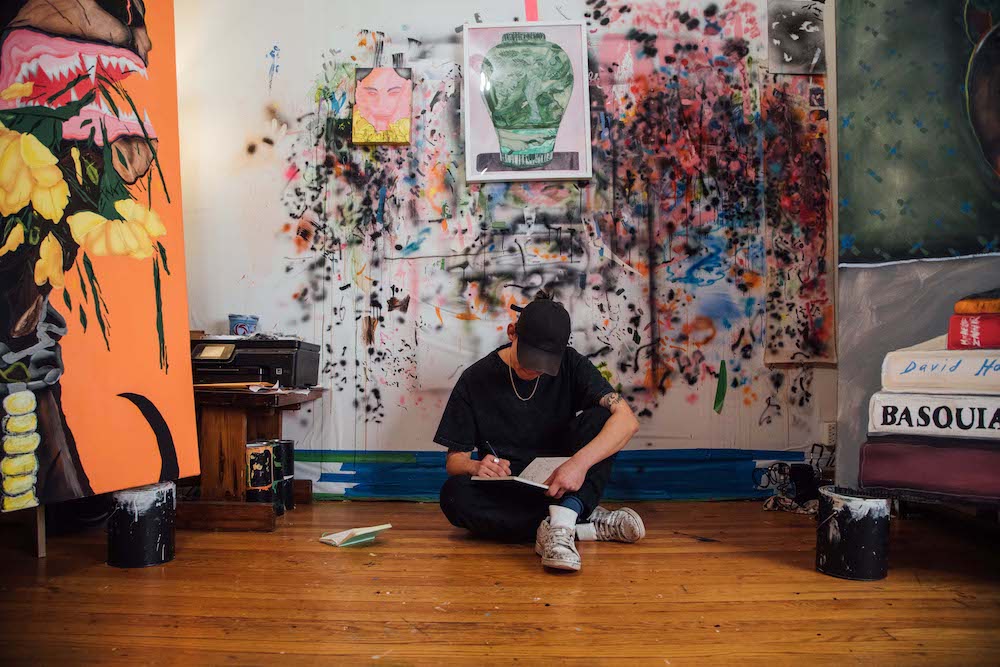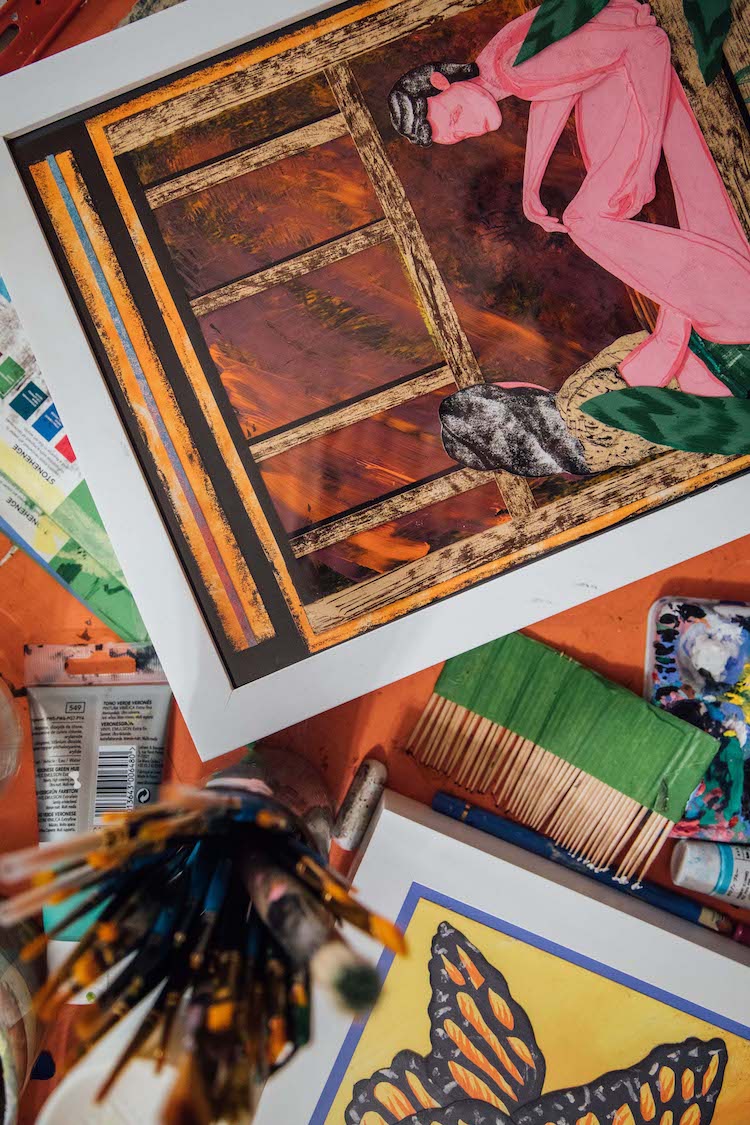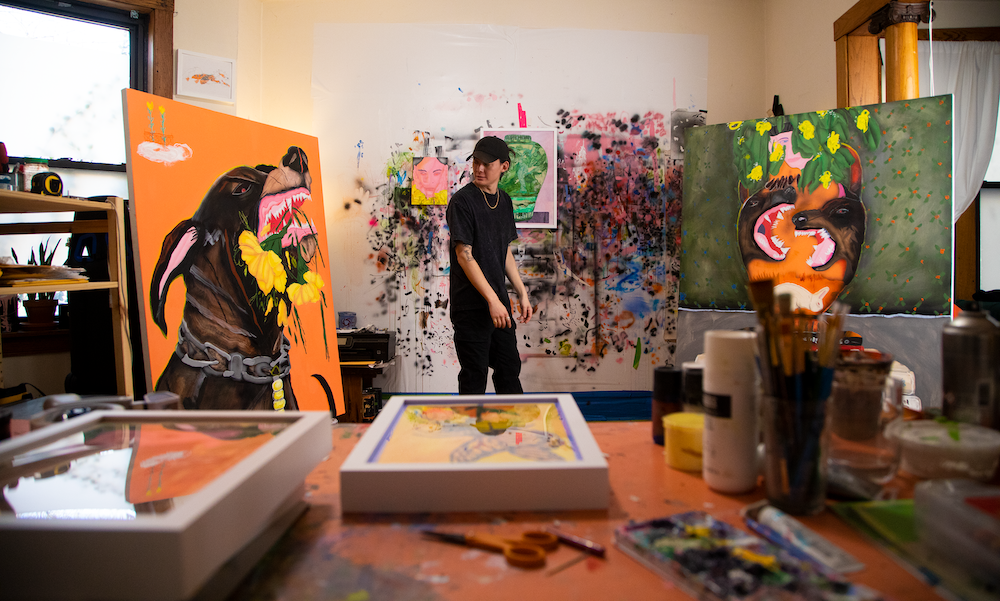Chicago-based painter David Heo works in dichotomies. A vibrant and bright palette with an almost biting edge, a southern upbringing in the United States and his first generation Korean-American heritage, and of course, the title of his newest solo show, From Dusk Till Dawn on view at Hashimoto Contemporary in SF right now. Vanessa Indies sat down with Heo to discuss the multiple angles in his work, vulnerability and what contrasts mean to him.
Vanessa Indies: This new body of work is heavily influenced from internal reflection and external events during the pandemic. How have you incorporated these into your new pieces?
David Heo: These last few years felt like the longest ebb and flow of absolute confusion sprinkled with scattered days of hope. It’s been a lot to absorb and the whiplash has felt overwhelming.
2020 was a mental and emotional collision of a year. I don’t mean that because of the pandemic only but rather everything else that came from it — the social aftermath and the following consequences and conversations that came to follow.
The piece Conversations (After Inner Dialogue) in the show subtly references this. The amphora in the painting is self-referential to an earlier painting Inner Dialogue. I made this piece in 2020 around mid May after a barrage of events -- in the peak midst of COVID, the lockdown in Chicago and then the George Floyd protests shortly after. That atmosphere was unlike anything I expected to live and experience through– I needed to make sense of how it affected me. The literary references, the yellow flowers, the hues of green, the inverting of the amphora — all those symbols and indexical signs hint at those eruptions.
You had also mentioned previously that your work expands on myths from Korean folklore and personal experiences. Can you explain how your Korean heritage and Southern upbringing played a big role in the concepts and themes you use in this current body of work?
Growing up in Georgia with two cultures, South Korean and Southern American, was interesting for me. I have memories of attending middle school, speaking English, eating chicken tenders for lunch and being assigned mandatory readings like the “The Giver.” But all that would switch when I got home. At home, there wasn’t an English presence. My mom would cook a large pot of kimchi jigae (kimchi stew) for dinner, we’d speak Korean and she would tell me these fantastical Korean folk tales before bed. There was a lot of internal juggling and confusion about my personal identity which Southern culture didn't nourish.
Last year, on March 16th when I saw the headlines about the Atlanta spa shootings I unexpectedly was forced to revisit that internal tension. It threw my world upside down because the tragic events unfolded in my hometown. The thoughts that followed sat heavily on my heart because it hit me that things didn’t get “better.” Rather, it seemingly evolved from blatant racism, micro-aggressions, and ching-chong jokes... to mass murder.
The piece “Folklore” comes from this space. It’s kind of a fractured narrative. The top half of the vase depicts one of my favorite stories my mom used to tell me. It’s similar to “Red Riding Hood.” It’s about these siblings who prayed to the heavens to save them, in fear, from the tiger who was going to eat them. A rope descends from the sky and they climb up. Yeah, that’s depicted in the bottom half of the vase but also it’s a moment for me to “hold on” despite all the fear that currently still exists.
Your work embodies a mix of intense feelings during small moments that imbue this sense of vulnerability. Can you explain your process in translating these feelings into physical work? How do the characters interact with your story line?
It might sound corny (laughs) but making art is how I really process living. I’ve accepted that’s how I make sense of the world. My practice has always been quasi-autobiographical because making art is a parallel to life. I mean, you know when you’re intentionally living and when you’re not intentionally living, or having any emotional involvement. You know that memory that pops into your brain around 1AM? Good or bad? Yeah, it’s that kind of phantasmal echo that goes into my process.
You tend to use mixed media in your works, how does the concept for each painting influence which type of medium you’ll use?
“In Between” is a good example of how I believe mediums can converse with each other when they all live on the same surface plane. If I’m using paint to depict something representational like a figure, I think – am I going to add onto that or disrupt it? For example, crayons and colored pencils are purely whimsy, and they leave such a distinctive mark. A nostalgic mark. Meanwhile, collaging feels more methodical. It can respond to painting structures and create an immense potential of physical/conceptual layering.
In that piece, you have this figure existing with all their emotions glaring at you. But between you and them, there’s this literal barricade of textural collaged flowers. Sure, that barricade could be depicted with paint but for me, it wouldn’t achieve the weight of what I want it to do. I think all materials have a voice and I’d like to harmonize their histories and strengths when it comes to creating.
How does the title From Dusk Till Dawn tie into the theme of the show?
It’s about the passing of time — from good days to bad and potentially back again. But it’s not a linear journey, rather it’s more cyclical. When one looks at the show, in its entirety, are you feeling that? Not only with the works in the show but also with the poetics that live in between the space of the hung works. Is the piece “astronomical” conversing heavily with “Thru Thick and Thin” but what about “Best of Luck”?
Like I said, it’s not a linear narrative conversation but rather cyclical.
When did you figure out your calling to be an artist?
Since I was a kid, I’ve always loved making art. For me, honoring that and sticking to it is important. To continue to learn, grow and grind for it is everything that I care about.
You use a vibrant color pallet to contrast intense imagery (a bright orange background surrounds a snarling dog). What do these contrasts represent to you?
Matisse says “The chief function of color is expression, as well as possible.” That sentiment is something that stuck with me early on. But I’m also fascinated with plot twists and dualities. The piece “Untitled (Yellow) is a prime example of that twist.
Color is wonderful because there’s never just one commonly understood assigned meaning. That bright orange — it can portray vibrancy or caution. Can I play off one of those meanings? or is it possible to highlight both when one reads that piece?
How has your artistic style developed throughout the years?
Earlier I mentioned that my work is quasi-autobiographical. That also extends to every format and avenue I’ve ever expressed on — whether that be for gallery shows, brand collaborations, or self-initiated projects. Those are all different spaces of energy and presentation. I think one of the biggest joys (and challenges) is to understand myself enough to translate and convey that. That’s how my artistic style has developed throughout the years. When you look at my paintings when I was 26, does it feel, not look, feel different? I’m 30 now so I think what’s important to me is greatly different from then. My practice will always be an ongoing process of self-discovery rather than a search for a single style or resolution.
For example, the painting installation I did for Vans was a strange yet wonderful experience because I have such nostalgic memories with this brand. I used to wear and paint on their shoes all the time when I was in high school. So to work with them in my adult life felt like a full circle -- a moment of cyclical serendipity. While I was working with them, all I could think about is “what does this brand, full of nostalgia, mean to me” — especially at this current moment after everything? What’s something I want to create and share with them? Especially, to the current younger generation of artists, skaters and weirdos who were just like me?
That’s why that painting installation lives the way it does, it carries so many moments of my life. The limited palette colors draw from the cultural duality of my upbringing, the depiction of the pent up dog is an amalgamation informed by the last few years. On top of that, it’s intentionally site specific to the House of Vans in Chicago because that’s where I grew into myself. All those symbolic moments are intentionally paired next to a canvas painting from 2018 that I had for my MFA at SAIC.
This synthesization of stacked and layered memories is a good example of that autobiography. A visual snippet of my youth to maturation. It’s this seemingly romantic thought process and translation that I understand how my artistic style continuously develops over time.
David Heo's From Dusk Till Dawn is on view at Hashimoto Contemporary in San Francisco through May 28, 2022.

